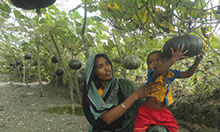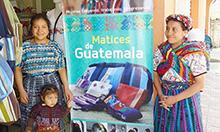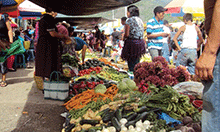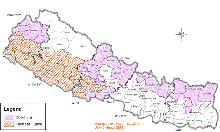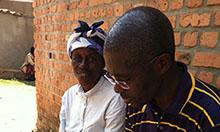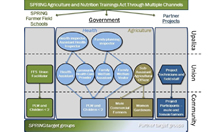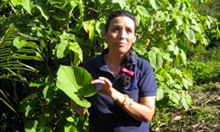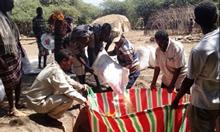What is nutrition-sensitive agriculture?
Agriculture is nutrition-sensitive when it addresses the underlying causes of malnutrition.
Nutrition-sensitive agriculture supports:
Food security
Adequate caregiving resources
Access to health services and a hygienic environment
Looking Beyond Food for Better Nutrition
While a better diet means better health, research shows that food alone won’t solve the problem of malnutrition. In this short video, SPRING explores why and how agriculture can better contribute to nutrition, and introduces tools and expertise to guide development practitioners in making agriculture programs nutrition sensitive.
Identifying Gaps and Charting a Way Forward
Beginning in 2012, SPRING convened a series of regional workshops and conducted a landscape analysis to explore the approaches used in nutrition investments under the Obama Administration’s Feed the Future Initiative (link is external). The findings from the landscape analysis highlighted gaps in efforts to collaborate across sectors to improve nutrition.
We are filling those gaps through:
Global Evidence and Guidance
SPRING's work explores why integration is necessary for better results in nutrition and identifies how to better link agriculture and nutrition programming. To help Feed the Future programs meet their nutritional goals, we developed a framework we call the agriculture-to-nutrition pathways, which shows the ways agriculture improves nutritional outcomes. The resources below share what we've learned so far.
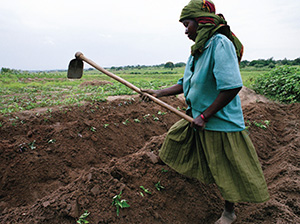 © Scott Wallace/World Bank
© Scott Wallace/World Bank Improving Nutrition through Agriculture Technical Brief Series
This collection of briefs addresses gaps in the evidence and guidance for how Feed the Future activities could explicitly link the work to improve agriculture production, grow agriculture markets, reduce poverty AND improve nutrition, especially of women and children, within their zones of influences.
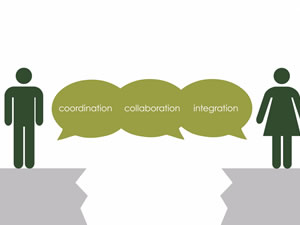
Operationalizing Multi-sectoral Coordination and Collaboration for Improved Nutrition
Reducing undernutrition requires a commitment from multiple sectors, yet documentation on how to collaborate across sectors to reach global goals is scant. Through a three-country assessment and literature review, SPRING investigated approaches to multi-sectoral collaboration for nutrition. This paper highlights lessons that USAID and its implementing partners learned, and provides a series of recommendations to guide the designing, implementing, and monitoring of future collaboration.
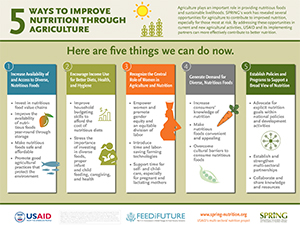
Five Ways to Improve Nutrition Through Agriculture
Agriculture plays an important role in providing nutritious foods and sustainable livelihoods. SPRING’s work has revealed several opportunities for agriculture to contribute to improved nutrition, especially for those most at risk. By addressing these opportunities in current and new agricultural activities, USAID and its implementing partners can more effectively contribute to better nutrition.
USAID’s Nutrition-Sensitive Indicators
SPRING is helping define how to measure nutrition-sensitive agriculture. Recognizing that increased household consumption of nutritious crops may not happen automatically with increased production, we conducted research regarding data collection for a new Feed the Future indicator focused on intended consumption of nutrient-rich value chain commodities (NRVCC). USAID released revised data collection guidance incorporating SPRING's work on the NRVCC indicator in its most recent indicator handbook. For more information about SPRING’s field work and findings, you can watch our webinar on the topic.
Design and Implementation Tools
We are developing a suite of tools that will equip international development practitioners with the latest evidence and guidance to design and monitor programs that link agriculture and nutrition. Our early experience underscores the importance of a thorough understanding of local contexts in designing effective nutrition-sensitive agriculture programs. As a result, we developed the Agriculture and Nutrition Context Assessment Tool to use whether creating new programs or amending existing projects.
Agriculture and Nutrition Context Assessment Tool
Conceptual Pathways between Agriculture and Nutrition
Click on the graphic or go here to find tools to help carry out context assessments.
Any assessment requires multiple aspects of inquiry, so SPRING developed specific guidance questions. These questions should help support the conceptualization and planning of a context assessment exercise and analysis or help check the range of assumptions that should be considered in agriculture-nutrition project design.
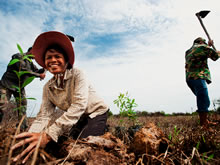 Credit: Cambodia HARVEST
Credit: Cambodia HARVESTAccelerating Behavior Change in Nutrition-Sensitive Agriculture
Making agriculture work for nutrition is fundamentally about changing people’s behaviors. The Accelerating Change in Nutrition-Sensitive Agriculture online training course will help implementers address questions such as: What are nutrition-sensitive agriculture practices? How do we select and prioritize those practices for our context and target populations? How do we increase the use of those practices?
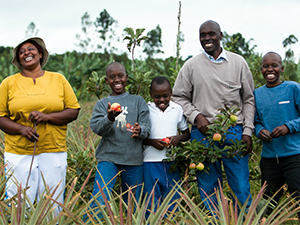 Credit: USAID/Morgana Wingard
Credit: USAID/Morgana WingardNutrition-Sensitive Agriculture Training Resource Package
The SPRING Nutrition-Sensitive Agriculture Training Resource Package is a collection of our very best training work, including presentations, activities, handouts, and session guides. Successful multisectoral training is key for developing the collaboration that nutrition-sensitive activities require. Successful partnerships hinge on developing a shared understanding of goals, activities, and essential concepts that allow our collaboration to thrive.
Learning from Field Experience
Since 2012, SPRING has been working with USAID and its Feed the Future implementing partners to document experiences working along the agriculture-to-nutrition pathways. Our reports provide a snapshot of how development partners are implementing and measuring nutrition-sensitive agriculture practices in different contexts, and the various successes and lessons learned along the way.
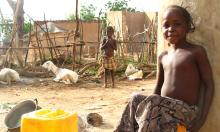
Growing Together? Experiences of Intersectoral Integration in an NGO Nutrition Program
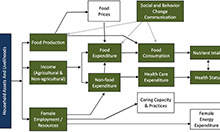
Supporting Agriculture and Nutrition Interventions at the Community Level in Senegal
Join Us!
SPRING is also implementing a range of components of nutrition-sensitive agriculture and collecting lessons learned in our country programs in Bangladesh, Ghana, Kyrgyz Republic, Senegal, and through community media work we are conducting in partnership with Digital Green in India and Burkina Faso and Niger.
We regularly share results, lessons learned, and other experience implementing nutrition-sensitive agriculture though:
Agriculture and Nutrition Resource Review »
A monthly selection of materials to keep you updated on research and developments related to strengthening linkages between agriculture and nutrition.
Events and Webinars »
SPRING hosts and contributes to a wide range of events that focus on nutrition within global development efforts. These events expand learning and foster experience and evidence exchange to inform nutrition policy and improve programming.
Join Us »
Become part of our community of agriculture and nutrition practitioners and researchers to receive updates on new resources and learning events.
